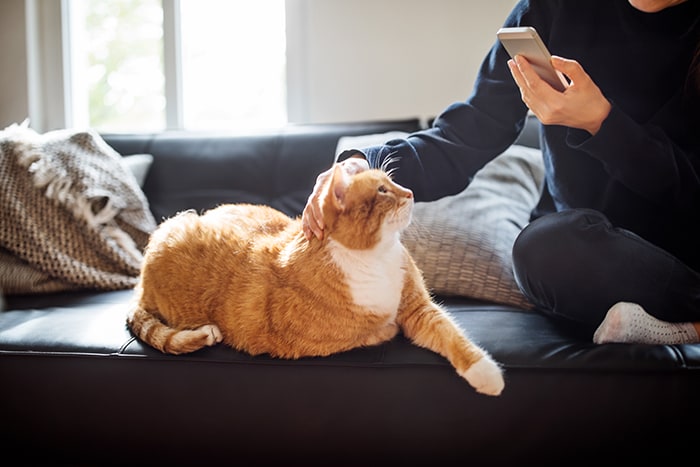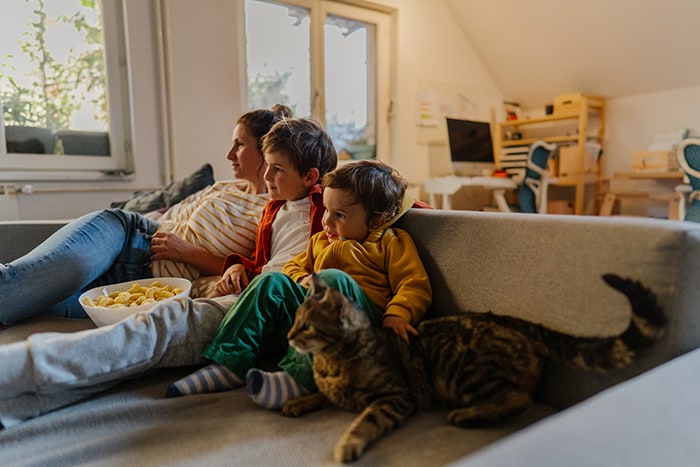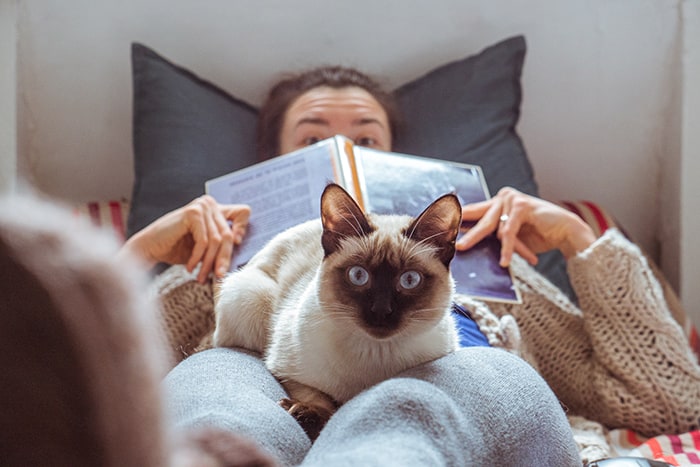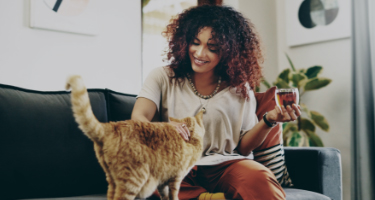Related articles
- Bringing home a new puppy
- The Cost of Owning a Pet in Australia
- How to find the right vet for your pet
- 10 easy ways to remove dog hair from your car
- Toxic foods and plants your dog should not eat
- Tick Paralysis in Dogs: Signs, Symptoms and Prevention
- Common cat diseases
- Common dog diseases
- What dog breeds are best for me?
- 8 tips to keep your dog cool in summer
- How to Buy the Best Pet Insurance
- Travelling with pets
- Bringing a new kitten home
- Things to Know Before Owning a Dog
- 6 dental care tips for cats and dogs
- Harmful foods and items your cat shouldn’t eat
- How to Socialise Your Dog
- How to Keep Your Dog Entertained While at Work
- Pet Costs Survey and Statistics 2023
- How to Save on Pet Insurance
- The Ultimate Pet Vacation Destinations
- Most Popular Dog Names Around the World
- Big Dog Breeds: Health, Cost and Personality
- Small Dog Breeds: Health, Cost and Personality
- How much exercise does my dog need?
- Pet Vaccinations: What vaccines are there and what are the pros and cons?
- Australia’s Favourite Dog Breed
- Why does my dog have diarrhoea?
- Cats vs Dogs: What makes a better pet?
- Pets in Australia Survey and Statistics 2024
- Australian Dog and Cat Care Survey 2024
- Easter Recipes Your Dog and Cat Will Love
- Dog Socialisation Survey and Statistics 2025
- How to Keep Your Pets Safe During Fireworks and Storms
Disclaimer: This information is general in nature only. While Budget Direct has endeavoured to ensure the information we’ve relied on is accurate and current, we do not guarantee it. Budget Direct accepts no liability for this information.
Cats vs. Dogs — it’s a debate as old as time — and when it comes to choosing your household pet, most people will firmly align with either one or the other. Both animals make great companions, but everyone has different wants and needs when looking for their furry friend.
Having already put together a list of best dog breeds, it was only fair we did the same for cats and help you choose what cat breed is the best fit for you and your family.
Different breeds
When choosing a breed you shouldn’t only factor in the needs of your family but also your new cat too. Each cat breed has a different set of needs and its distinct personality.
When choosing a breed it’s important to consider:
- How long your cat will be spending alone indoors and/or with access to outdoor enclosures/cat runs.
- How they interact with other animals (this will depend on whether they’ve been raised with other animals from a young age).
- The size of the cat and the length of its coat
- Whether you want a cat who is kid-friendly, affectionate, talkative, or hypoallergenic.
The length of time you should leave a cat home alone will depend on their personality, environment, and diet. A healthy adult cat can be left alone for up to eight hours while a kitten younger than four months shouldn’t be left alone for more than two hours at a time.
Breeds like the Sphynx cat, Ragdoll, Devon Rex, and Siamese cats are all known for being ideal indoor cat breeds.
You should also consider whether you can find a pet insurance provider that covers your desired breed (if you want pet insurance), which genetic conditions are associated with your chosen breed, and how that could affect you and your pet in the long term.
Living space

While some cats are better suited for apartment living (Burmese, Ragdoll and Russian Blue), it is still safe to say there are also a lot of cats that can live very comfortably and happily in either a smaller or larger space.
It’s also important to consider how long your cat is going to be left alone. Some cat breeds are better suited to being alone like the Maine Coon, Russian Blue, Ocicat and Ragdoll. This decision, however, should still be made based on your cat’s individual needs.
Depending on the length of your cat’s coat you may need to groom them daily, weekly, or monthly. This may help to prevent excess shedding and keep your living space (relatively) hair-free.
Lifestyle
Choosing the right breed to match your lifestyle and level of energy is a very important step in the process. Different breeds may be more energetic or talkative and may require a lot more time and attention.
Regardless of whether your feline friend is indoor-only or does spend some time in an outdoor enclosure or cat run, they still should get the exercise through interactive play with a human parent and walks outside on a leash (if that is something they like to do).
You may find installing a cat enclosure or cat run is a great way for your cat to get some exercise outside, without having to worry about predators that may harm your cat or your cat hunting other animals.
You should consider how your cat will interact with other dogs or cats. The Abyssinian, Birman and Bombay cats are some of the best breeds for interacting well with your existing pets.
Budget
Some breeds will ultimately cost more to look after than others. This can be determined by a particular breed’s size, weight, amount of food they consume, whether they need professional grooming, or if they’re prone to certain health conditions later in life.
Costs that you should consider may include:
- Flea, worming and tick preventatives
- Grooming
- Toys
- Bedding or shelter
- Boarding costs if you go on holiday
- Vet check-ups, including vaccinations
- Treatment for injuries, illnesses, or other health conditions
- Food to fulfill specific dietary requirements for some health conditions (e.g. urinary issues, stress, or obesity)
- Pet insurance
Size of the cat
Just like dogs, cat breeds can vary in size.
Small and medium cats can weigh between 3-4 kgs and 4-6 kgs respectively, while a large cat (like the Siberian or Norwegian Forest cat) can weigh up to 15 kilograms!
However, the cat breed you choose doesn’t need to be determined by the size of your space. Larger breeds, like a Maine Coon, are specifically known for their friendly, laid-back nature and ability to adapt, making them great apartment cats!
Coat length

Cat hair can be long or short, curly, or straight depending on the breed. Choosing the best cat breed for you and your family can come down to how often you’re wanting to groom your cat or pick its hair off your carpet, furniture, or clothing.
If you’re a first-time pet owner you may want to choose a short-haired cat so that you can keep their maintenance to a minimum.
Hairless cats
Despite being known as “hairless” these cat breeds can still have a fine coat that feels like suede to the touch. These breeds are known to produce fewer allergens than other cats, making a reaction for those with allergies less likely. Some hairless cat breeds include Sphynx cats, Donskoy cats and Peterbald cats.
Short-haired cats
These types of cats are low maintenance, simple to groom and don’t shed much. Short cat hair barely reaches more than 5 centimetres in length. Some short-haired cat breeds include Bombay, Burmese, Tonkinese and Cornish Rex cats.
Long-haired cats
These types of cats typically grow between 5-13 centimetres in length. Long hair can become matted or tangled so make sure that it is properly groomed. Some long-haired cat breeds include Birman, Siberian, Ragamuffin and Turkish Van cats.
Family cats

The best cat breeds for kids will have a gentle, laid-back temperament and an appropriate energy level to suit your family’s current lifestyle. You’d also want it to interact well with other family members and pets.
Here are some of the best cat breeds for kids [1]:
- Abyssinian
- Siberian
- Maine Coon
- Ragdoll
- Manx
Affectionate cats
If you’re looking for a cat with an affectionate nature you should also be mindful of its high social needs. While you may love to spend time with this type of cat you should try to keep other interactive toys on hand for when you’re busy.
Here are some of the most affectionate cat breeds:
- Ragdoll
- Siamese
- Bombay
- Tonkinese
- Birman
Talkative cats
Some cat breeds are known for being more talkative than others and what we’re learning over time is that these vocalisations are more for communicating with people rather than other cats.
While it is much easier to pay attention to a talkative cat’s verbal and non-verbal cues, if you’re seeking a silent or quiet cat breed then this type of cat may not be the best option for you.
Here are some of the most talkative cat breeds [2]:
- Balinese-Javanese
- Bengal
- Burmese
- Ocicat
- Peterbald
Hypoallergenic cats

If anyone in your household suffers from a pet-related allergy then you could also look at a hypoallergenic cat breed. While there is no such thing as a completely hypoallergenic cat, many are marketed as the best cat breeds for allergy suffers because they shed little to no fur.
Here are some of the best cat breeds for allergy sufferers:
- Balinese
- Javanese
- Sphynx
- Russian blue
- Siberian
If you’re looking for something particular in your cat, then Purina’s cat breed selector can help you find your “purrfect” match in no time!
Sources
[1] Pet Health Zone, 2019, 10 Best Cat Breeds for Kids
[2] Purina, 2013, Most Vocal Cat Breeds
Related articles
- Bringing home a new puppy
- The Cost of Owning a Pet in Australia
- How to find the right vet for your pet
- 10 easy ways to remove dog hair from your car
- Toxic foods and plants your dog should not eat
- Tick Paralysis in Dogs: Signs, Symptoms and Prevention
- Common cat diseases
- Common dog diseases
- What dog breeds are best for me?
- 8 tips to keep your dog cool in summer
- How to Buy the Best Pet Insurance
- Travelling with pets
- Bringing a new kitten home
- Things to Know Before Owning a Dog
- 6 dental care tips for cats and dogs
- Harmful foods and items your cat shouldn’t eat
- How to Socialise Your Dog
- How to Keep Your Dog Entertained While at Work
- Pet Costs Survey and Statistics 2023
- How to Save on Pet Insurance
- The Ultimate Pet Vacation Destinations
- Most Popular Dog Names Around the World
- Big Dog Breeds: Health, Cost and Personality
- Small Dog Breeds: Health, Cost and Personality
- How much exercise does my dog need?
- Pet Vaccinations: What vaccines are there and what are the pros and cons?
- Australia’s Favourite Dog Breed
- Why does my dog have diarrhoea?
- Cats vs Dogs: What makes a better pet?
- Pets in Australia Survey and Statistics 2024
- Australian Dog and Cat Care Survey 2024
- Easter Recipes Your Dog and Cat Will Love
- Dog Socialisation Survey and Statistics 2025
- How to Keep Your Pets Safe During Fireworks and Storms



